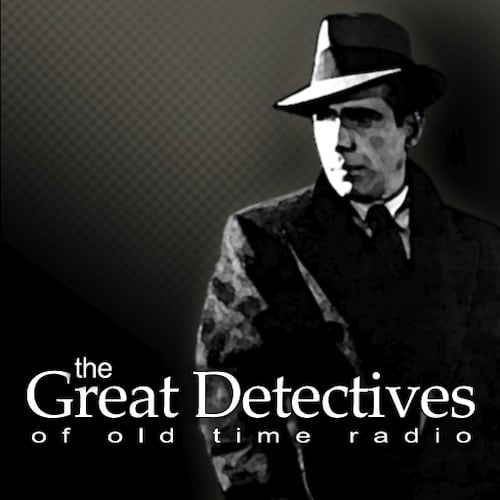Our Miss Brooks is the most popular and beloved of the post-War sitcoms, airing from 1948-57. It was on television from 1952-56 and came to theaters. The television version lacks an official DVD release, so only a few public domain episodes are easily available. We’ll be focusing on the radio version.
The series began in 1948, focusing on Connie Brooks, an underpaid English teacher at Madison High School who was a boarder in the House of Miss Davis. The series covers Brooks’ troubles with an authoritarian principal and trying to win the man she’s in love with, bashful biologist Philip Boynton.
Originally, Shirley Booth was chosen to star and a pilot was recorded featuring her, but she wasn’t a good fit. Eve Arden won the starring role and it’s hard to imagine anyone else in the part. She had a great sense of comedic timing and near perfect delivery, always generating a laugh at the right time. In addition to her relationship frustrations, Miss Brooks was beset by financial problems. And, again, Principal Osgood Conklin’s constant demands went above and beyond any reasonable interpretation of her job description.
Conklin was played by Gale Gordon and his character makes the series what it is. Conklin is an authoritarian and a bit of an egotist. He strictly enforces all rules, including ones he himself ignores. A character like this could become obnoxious, yet Gordon makes him fun. He has signature lines, such as the most incredulous of, “Oh you do…” to someone whose opinion he thinks is preposterous. He also has a classic delayed reaction where he goes on calmly for several seconds before realizing what someone said and responding.
Conklin was humanized a bit. He often suffered from Miss Brooks’ accident-prone nature. By the end of most episodes, Conklin has got his comeuppance, which makes for good catharsis.
Mr. Boynton was played from 1948-53 by Jeff Chandler and thereafter by the Robert Rockwell, who played the role on television. Boynton is a biology teacher and tone-deaf to romance. He likes Miss Brooks but doesn’t express it even though they date quite a bit. He’s cheap and rarely pays for anything with Miss Brooks. His idea of a hot date is a trip to the zoo. He’s obsessed with his biology animals and will often demur on more exciting opportunities.
Miss Brook’s landlady Mrs. Davis (Jane Morgan) serves as a warm, supportive figure who is hilariously absentminded. Walter Denton (Richard Crenna) is a squeaky-voiced teenager who lavishes Miss Brooks with praise and frequently drives her to school. He’s also a representative of the students and often locks horns with Mr. Conklin.
Harriet Conklin (Gloria McMillan) rounds out the regulars as Conklin’s daughter and Walter’s girlfriend. She was level-headed, intelligent, and kind. Major recurring characters included Miss Enright (Mary Jane Croft), a fellow English teacher who was a rival for Mr, Boynton’s affections. Most of her episodes featured an entertaining verbal catfight between her and Miss Brooks. Stretch Snodgrass (Leonard Smith) was a stereotypical “dumb jock” but a well-realized one, always managing to create laughs through his malapropisms and his inability to keep anything straight. Gerald Mohr played at least two different French Teachers in order to be stereotypically French and romantic.
The stories are standard sitcom fare that relies on the characters and the cast’s chemistry in order to make the plots work. The stories reflect the culture of the times and the expectation of teachers to maintain a high moral standard. Mr. Conklin would sometimes take this to excess and raise concerns about Miss Brooks and Mr. Boynton’s “fraternization.” However, they’d been dating for at least five years and still addressed each other as Miss Brooks and Mr. Boynton even away from work. They were far above most people’s standards. The series reflects a more innocent time in entertainment.
The show does have its weaknesses. Many episodes require Miss Brooks and company to convince people of an outrageous whopper of a lie. The problem is the lies are so outlandish and the deception has such low consequence for the truth coming out, the show comes off as dumb rather than funny.
In addition, the series doesn’t have the heart of many other productions from the same era. Unlike The Life of Riley or The Great Gildersleeve, characters in Our Miss Brooks, never have any regrets about their actions, nor do they have heartwarming moments. The story remains a comedy all the way through each episode. While comedies should focus mostly on the funny, the lack of any emotional moments or regrets makes the characters more shallow and harder to relate to.
Still, despite its issues, the series works due to its funny situations and Arden and Gordon’s unerring timing and delivery. It is one of radio’s true classic sitcoms.
Rating: 4.25 out of 5
180 Episodes of Our Miss Brooks are available here.
If you enjoyed this post, you can have new posts about Detective stories and the golden age of radio and television delivered automatically to your kindle.
